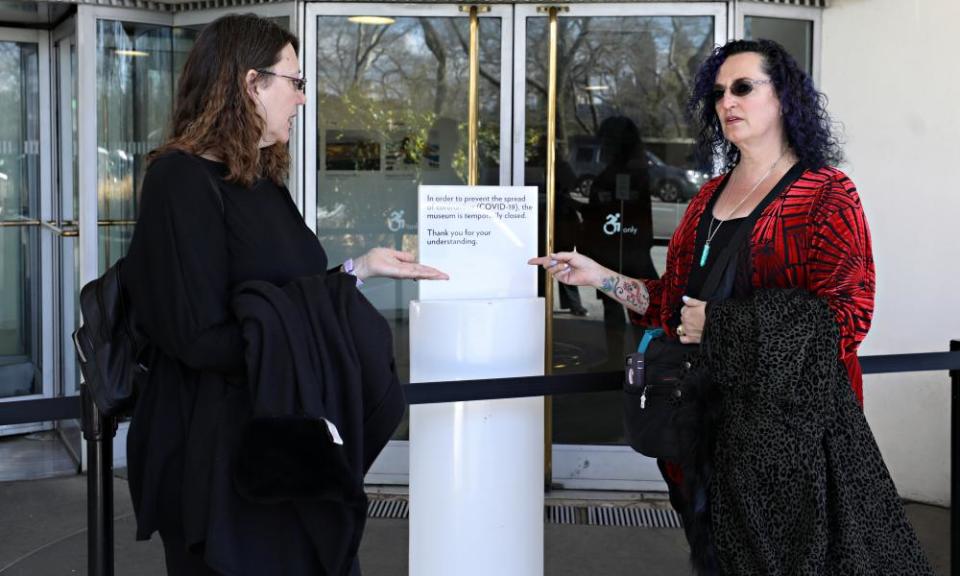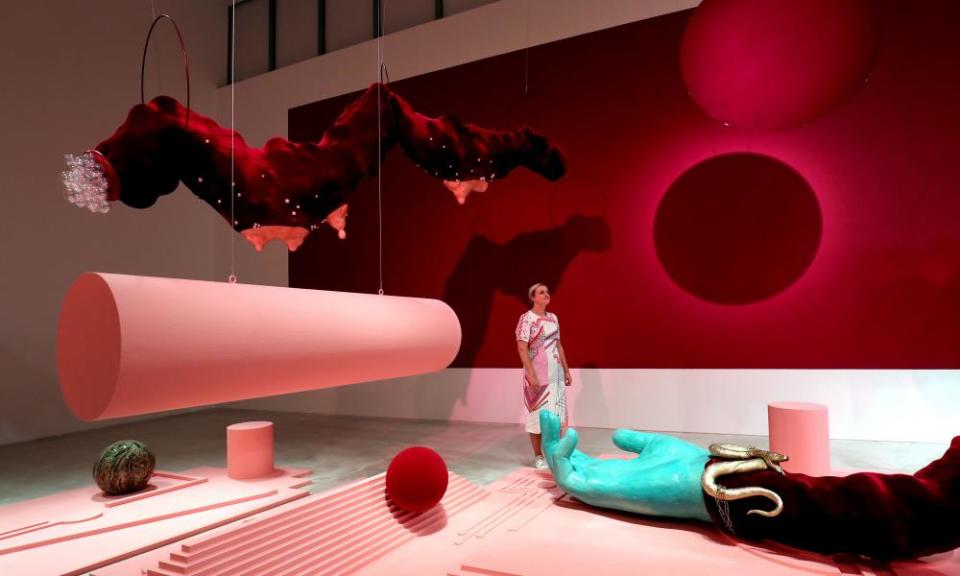Self-help is key for an art world in lockdown

The show is on, but not open. The masterpiece hangs unseen. The museum is as silent as the isolation in which the artist tries to work, uncertain of any future as the virus rages without vaccine. Art now waits upon science.
The four Tates closed first. “It is strange and sad to think of them occupied by art, but empty of the audiences they serve,” reflects Frances Morris, the director of Tate Modern. “To shut such recently opened shows as Warhol and McQueen is distressing; so much work had gone into Tate Modern’s 20th anniversary.” The National Gallery’s Titian, years in the planning, closed after just a few days. The exhibition reunited what director Gabriele Finaldi calls “possibly the most important cycle of pictures ever painted”, adding: “But how can we think of that, before humanity?”
Art’s cyclical certainties are over too. Next year’s Venice Biennale hangs in the balance. Its lively homespun equivalent in Glasgow, just about to open, is now delayed for a year. At least the artists’ contracts are being honoured, as they are in our public galleries. In New York, some staff at the Guggenheim have expressed fears they will not be paid and the Metropolitan Museum has told staff it can only guarantee pay until April.
The earliest effects of Covid-19 predictably centred on money, not art. The great selling shop of Art Basel Hong Kong was instantly cancelled, and replaced with online viewing rooms. As with Asos, customers could consult their smartphones then buy their Georg Baselitz from the dealer. Nobody rushed. The market was quiet, possibly chastened. And so it remains, collectors truly home alone now with their costly purchases.

Ben Luke, of the Art Newspaper, thinks the whole gallery system is under threat. He says: “It is not going to look anything like it did before the pandemic. The ecosystem was already fragile, with small but influential galleries showing really interesting artists, who are then swallowed up by mega-galleries. Anything very much smaller than Gagosian, etc, may now struggle.
“We don’t really want to talk about blessings at this moment but maybe there will be a lot less bling. Lately we have had so much awful, overblown art. On the other hand, artists who live hand to mouth already, or who make work that isn’t saleable – performance, installation, conceptual art – may have to stop. The precariousness of the freelance community that underpins so much of the art world is a massive concern. We might lose the really interesting emergent art, the stuff of the future, if we are not careful.”
Tim Stoner, a Beck’s Futures winner, had just opened a show of marvellous semi-figurative landscapes at Modern Art, in London, when the virus hit. He says: “It was four years’ work, I wanted to make a museum-sized statement and, ironically, the gallery delayed it a few months so it would get a longer slot. I’m gutted it closed, but I spoke to my neighbour who is a postman, and his situation is infinitely worse. I’ve spent years learning how to survive as an artist and, to be honest, I feel like I have been in isolation for decades.”
Every contemporary gallery with the money has pulled together an online experience, where you’re invited to tour and roam. There are 3D models of sculptures; augmented reality experiences; an ocean of high-resolution images. But everything is miniaturised and flattened behind our glowing screens. Similarly, Royal College of Art students are understandably protesting at plans to assess their degree shows online. Morris says: “My final view as I left Tate Modern last week was of Kara Walker’s monumental Hyundai Commission Fons Americanus, emptied of water in a Turbine Hall emptied of people. For me, no amount of digital content can ever compensate for the thrill of walking into that vast space and seeing art with the public.”
Still, we should not disdain the internet, which now allows us to wander St Petersburg’s Hermitage museum for more than five hours, to see the magnified brushstrokes of a Van Gogh that are otherwise invisible to the naked eye, or to learn painting from scratch with Keith Tyson, a Turner Prize winner, on his invigorating isolationartschool on Instagram. The Royal Academy’s Daily Doodle Challenge – who can draw the best ham, the best tree – is already a Twitter triumph. “The idea is simple,” says the RA’s Adam Koszary. “Small creative acts are good for mental health.”
Is there yet any model for art’s future? What’s needed is a vanguard of modern Medicis commissioning artists for their own pleasure. And while the Arts Council last week announced a £160m bailout for institutions, it will take far more to rescue individual artists. Hans Ulrich Obrist, artistic director of London’s Serpentine Gallery, believes galleries must take the lead. He says: “It will be our collective role to support artists at this time. When we avail our platforms to artists, the direst problems of the world can be understood with honesty and hope. I think we have to look at Roosevelt’s Public Works of Art Project, which was aimed at providing work for artists during the depression.”
The Serpentine is relaunching Do It, in which artists’ instructions for making art can be interpreted by others anywhere at any time. Obrist says: “So many museums are live streaming, it seems important to do things offline too, so anyone can realise a sculpture by Franz West or follow Louise Bourgeois’s instructions to smile at a stranger.”
The landscape of art will alter. The cost of city living was already prohibitive; some artists will move. Others may change the kind of work they do. Stoner says he will draw more; the artist Henry Ward is now making kitchen-table sculptures and giving lessons on how to sculpt at home, on Instagram.

Tai Shani, whose spectacular live performances combining dialogue, costume and sculpture were a joint winner of last year’s Turner prize, is one of many artists involved in social initiatives. She says: “A crisis of this magnitude affects most of us similarly and shines a very bright light on my privilege. Artists are quite good at problem solving and it is important to rechannel my energy into being a contributing citizen. If you can sew, make masks; if you’re in a position to pay someone who can, and needs work, do that.” Shani is selling a virtual reality play to raise money for food banks.
The Sussex-based painter Matthew Burrows has come up with the brilliant Artist Support Pledge. Artists are invited to put works up for sale for no more than £200 on Instagram. If they hit £1,000, they must buy another artist’s work. Almost £9m has already been generated in the first week.
Nobody knows what the art world will look like when the disaster passes, but a spirit of hope survives. Art museums in China and South Korea have already reopened. The Art Newspaper is advising freelancers on how to apply for finance to survive. Other galleries are following the Serpentine’s “Slow Programming” model, which commissions art for a long time in the future.
And, at the National Gallery, scholarship, conservation and plans for great exhibitions are forging ahead. Finaldi says: “The second world war was the last time we had to do what we’re doing now, and all our catalogues have their origins in that quietude. What this time tells us is what we value, who we think we are. This collection is a communal effort by the British over two centuries and when the virus ends, I believe there will be a mad rush back to art.”
Laura Cumming is the Observer’s art critic

 Yahoo News
Yahoo News 
